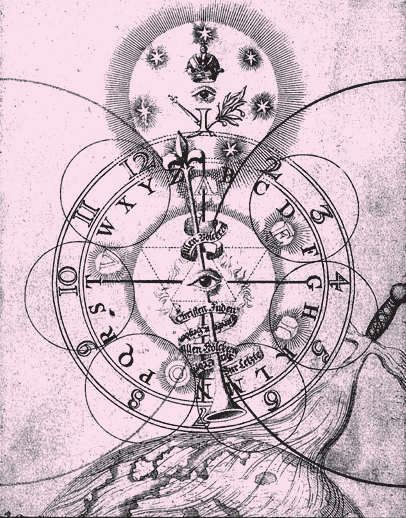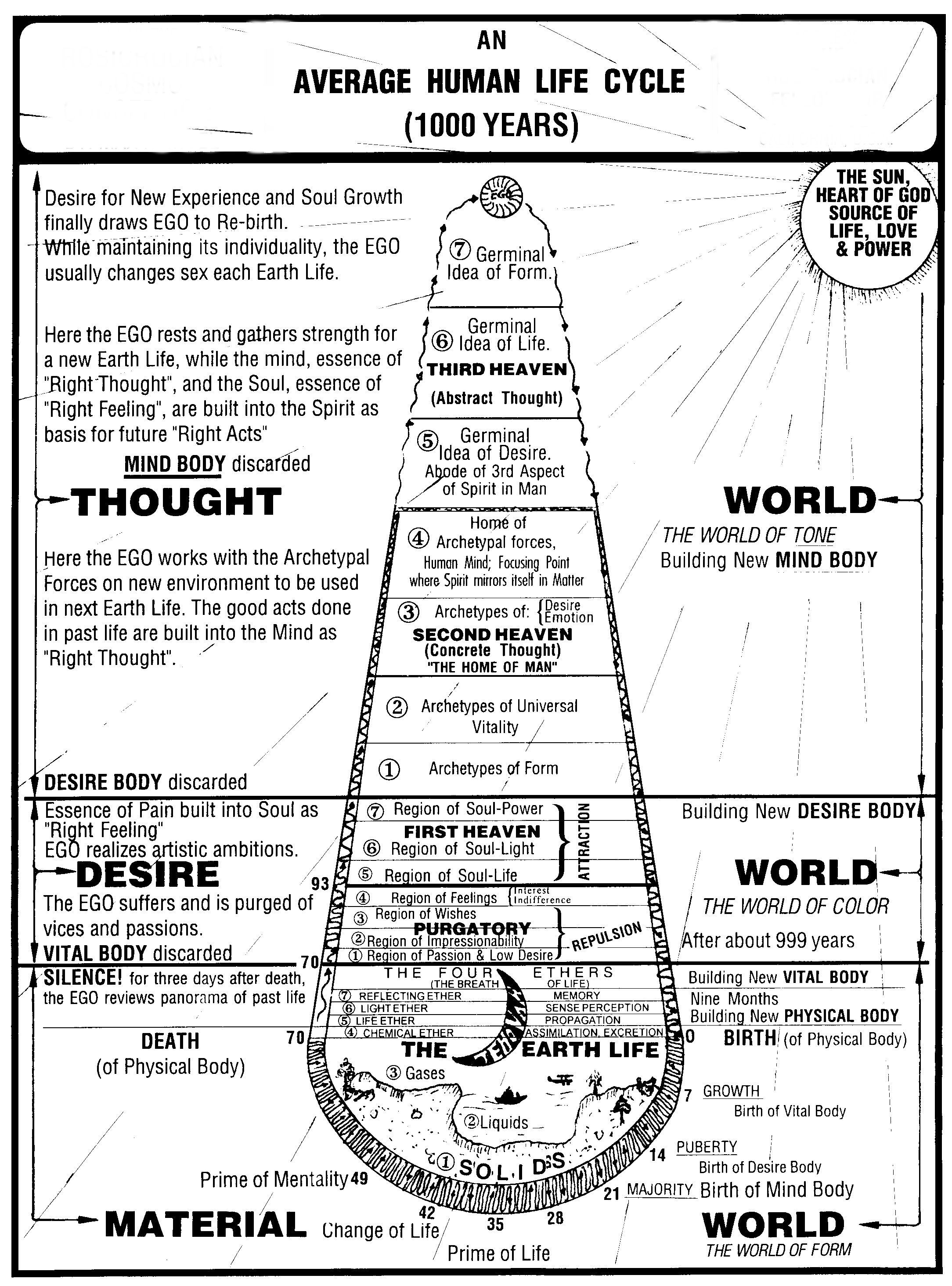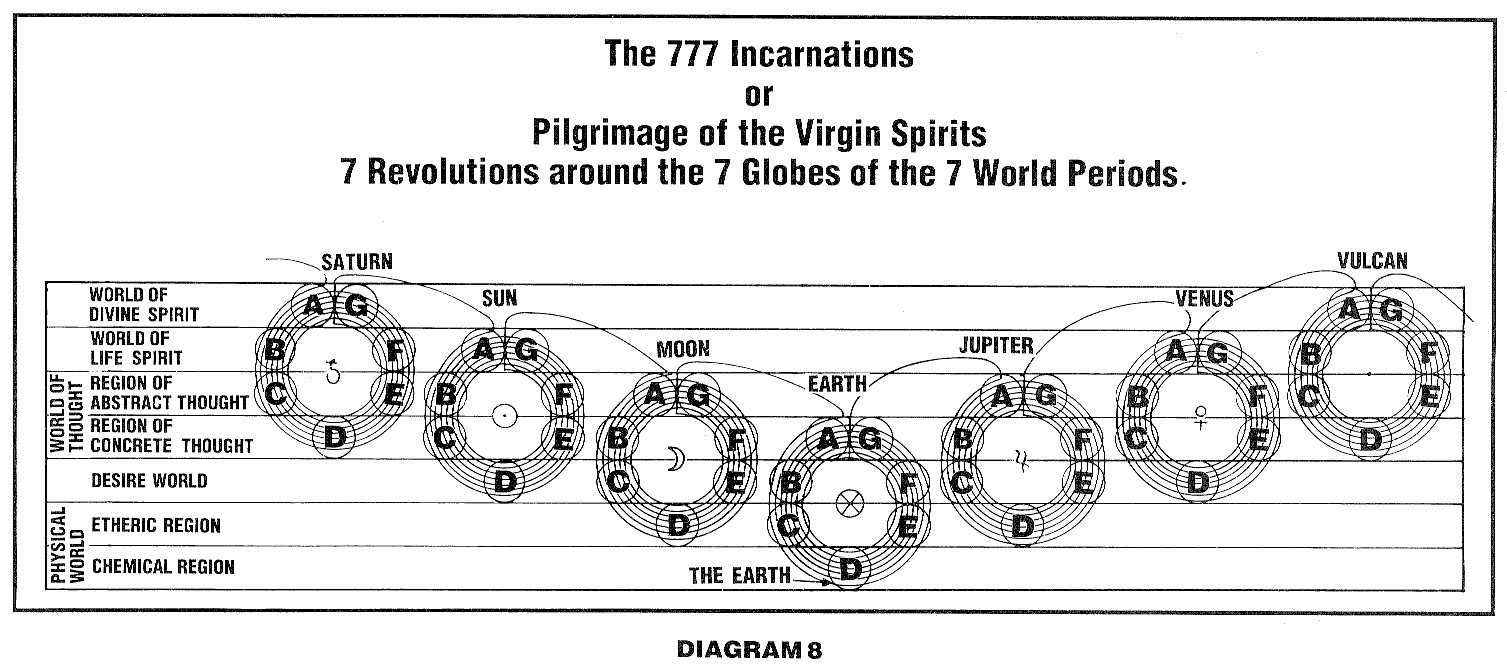
| rosanista.com | ||
| Simplified Scientific Christianity |

|
"The natural dance of life-expressions is the sequence of unfoldments that follows upon birth and which is concluded at transition. Every manifested factor in the natural world has its timing for un-foldment of potentials and when that unfolding is made without unnatural interference, the plant or animal alchemicalizes its physical form through all the stages of experience according to the rhythm of its basic pattern. So with human beings; we have a 'timing pattern' for the unfoldment of our potentials in the stages of growth, but individual qualifications vary the timing for fulfilling experience-patterns. However, human or sub-human, we all dance through these unfoldment-phases of natural growth." |
To dance is to signify, by rhythmic bodily movements, one's consciousness of participating in the world of Nature. To dance is to make the physical body an instrument for the manifestation of archetypes as expressions of emotional states and of spiritual concepts. These emotional states are focussed points of spiritual awareness of such intensity that they "must out" through the instrumentality of the physical body.
As man applied himself to manipulate material substances to express, by building, his octave of "enclosing protectiveness" to house that which he loved and worshiped, so did he dance to express the inner life of that which his physical body enclosed — his consciousness and heart with their dreams, fears, loves, challenges, aspirations, and understandings. "Living" is not just moving through time from place to place in space. It is moving through evolution from point to point in consciousness. To dance means to identify one's self with cosmic movement, which is the alchemical action of life, by rhythmic sequences of archetypal bodily postures. To dance does not mean, as some think, to "outpicture music." Man moved his physical body on this plane long before he ever invented a musical instrument; music and costume are vibratory accompaniments which serve to intensify and clarify the dance-artist's expressions which are, by their very nature, extremely personal. However, dance essentially expresses through its own merits — it does not need other adjuncts to fulfill its basic purpose. Dance is everywhere seen in the natural world; let us personalize a little to study a few examples:
The natural dance of life-expressions is the sequence of unfoldments that follows upon birth and which is concluded at transition. Every manifested factor in the natural world has its timing for un-foldment of potentials and when that unfolding is made without unnatural interference, the plant or animal alchemicalizes its physical form through all the stages of experience according to the rhythm of its basic pattern. So with human beings; we have a "timing pattern" for the unfoldment of our potentials in the stages of growth, but individual qualifications vary the timing for fulfilling experience-patterns. However, human or sub-human, we all dance through these unfoldment-phases of natural growth.
If we think of "dance" as the movements of a physical organism we see its evidence everywhere in the world of Nature. The branches of a tree move to and fro, responding to the wind-forces which play through them — we say that the tree is making beautiful movements with its arms. The waves of the ocean give the impression of dancing by their endlessly busy running up the beach and withdrawing in pulsating sequences of movement, each wave resembles a line of dancers rushing across a stage and back again. The Moon performs a long "bourree" (serene and legato) across the sky at night. The sportive dolphin leaps from the water in beautiful arcs; who is to say that he doesn't feel the same "joie-de-vivre" that boys and girls feel who "dance" by skipping down the street. Skipping and leaping are archetypal movements which symbolize the challenge to gravity and, as movement-symbols, they represent aspirational urges. The whirlings and spiralings of autumn leaves are fine illustrations of dance-movements — sweeping, gliding, up-soaring, fluttering down to momentary rest, then away again in new spirals and arcs. Billowing clouds dance in an eternal dissolving and remolding of shapes as the wind drives them across the stage of the sky; clouds are a perfect out-picturing of alchemical changes — silent and smooth, they melt from one aspect to another in an incomparable beauty of motion. A galaxy of colorful garden flowers, bending and swaying on their stems, is a natural "corps-de-ballet." Think of the many kinds of movements of animals and birds; the haughty parade of the peacock; the circular gliding through the water of fish and seal; the staccato flight of the butterfly; the fluid pacings of cats, and the virile prancing of horses.
How do human beings dance? We all dance according to cosmic plan in our unfoldments of physical and psychic potentialities through the various phases of our growth as organisms. But every individual dances according to the quality of his consciousness. Some people, harmoniously integrated, dance through life in an extraordinary beauty of rhythm. They accept experience as it comes, deal with it, and learn from it to the best of their ability; then, being forward-looking by nature, they pass on to new experience, rhythmically. They exercise a minimum of inner congestion and a maximum of dynamic expression; the entire span of their incarnation is a beautiful arc of evolutionary progress. They work with integrity and idealism — their work-contribution is a true service, a radiation of goodness and true value to all who are affected by it. They love with intensity, amplitude, and joys they are open-minded, receptive to the values of new ideas. Kahlil Gibran, inspired artist and poet, had the soul of a "true dancer;" he said: "Dance with freedom and joy, but tread not on another's toes."
In the metaphorical sense, "poor dancing" is the result of inner congestions. In the physical sense, a person who is afflicted with excessive shyness, self-consciousness, or physical defect does not — and cannot — dance beautifully, with spontaneity and joy. "Spiritual awkwardnesses" are caused by such emotional and psychological congestions as ignorance, negative selfishness, fear, hatred, greed, envy, materialism, possessiveness, frustration and its attendant cruelties, disappointment-patterns, inertia cynicism, and congestion on form-identity. This latter is one of the deepest-reaching sources of "unrhythmic life-dancing" there is. Its essence is a congestion on appearance as reality; it makes the consciousness focus on form rather than on essence and it serves to throw evaluation completely out of line. People who "dance according to form" rather than "according to Spirit" are those who accept the imposition of standards and evaluations by others, rather than by the establishment of standards from the exercise of individuality. They are the people to whom that which has been established is the symbol of security and rightness; they are crucified by caste-consciousness; they tend to evaluate human personality, character, and experience by a materialistic philosophy which congests them on the outer at the expense of awareness and appreciation of inner truths. The corrupt social and religious standards of past centuries picture this kind of congestion. Hereditary value rather than personal value; family, tradition, and social position represented the focus of appreciation rather than did in- dividual worth. Look almost anywhere and at any epoch and you will see congestion on form as the source of perverting and deflecting the natural rhythmic flow of human development and fulfillment. One perfectly superb example is seen in the misinterpretation of a certain spiritual allegory which had the effect of subjugating women for ages — a karmic device by which man's congestion on form reacted upon himself during his female incarnations.
This congestion on form is symbolized astrologically by the planetary scope of "Moon-to-Saturn." Persons who are karmically or evolutionarily conditioned to live within the confines of this "scope" are those to whom individuality is practically an un-opened book. The patterning of the standards by which they live is, for the most part, according to that which was established by others in the past. Education, work, religious thought and ceremony, marriage, training of children, relationship-factors, etc., are prescribed for all, generation after generation. The feudal system of Europe and the effect of Confucian philosophy on the Chinese nation are good examples of this formalization of human experience. Esthetic expressions (and all peoples have them to some degree because the esthetic urge is too basically instinctive to be completely denied by anyone) are, for the most part, highly formalized and traditionalized. The esoteric essences of religion are submerged in accretions of rituals and ceremonies which are performed or participated in with feelings of awe and fear rather than as exercises of spiritualized intelligence. Marriage — which in essence should be the most intensely individualized expression of human life-is for the most part for the perpetuation of estate and name.
We recognize, of course, that there is no "injustice" in people incarnating under such a regime; their consciousness is aligned to the structuralizing of Moon-and-Saturn or they could not be attracted into incarnation through it. But, karmic justice aside, such strict formalizations do inhibit the free flow of expression and unfoldment because fear is such a strong factor inherent in them. For a time on every evolutionary cycle "Moon-and-Saturn" hold the reins; they, together, symbolize the "formal back-bone" of all cyclic experience; but, eventually the individual potentials must be released by transcendence on "that which was;" the planets Uranus and Neptune are the vibrations which represent the "decrystallizing of outmoded form" and the "revelation of the inherent spiritual essence," respectively.
Our subject at hand is dance but let us remember that all participants in a particular art-expression are members of a spiritual family — a "fraternity" of kindred artistic endeavor. Like any other human group, the artistic family (of whatever kind) is just as subject to the tendency to formalization (and crystallization) as in ally other family-group. When form, structure, rule, and traditional standard are emphasized at the expense of inspiration and spontaneous manifestivity, congestion of artistic value sets in. Look anywhere in the recorded history of artistic endeavor of the human family and you will find many periodic points of congestion on form and tradition, at which times a dearth of inspirational power was evident. Folk-dancing originated in the attempt to perpetuate tribal history and religious belief and tradition in a sort of dramatic representation. These "dramas" subsequently became formalized by inculcating the factors of rhythmic movement and vocal or instrumental accompaniment into what we call "traditional dance" and some of these dance-forms in various parts of the world, are ages old.
The ballet is a more cultivated and intricately stylized expression of European "rhythmized drama." Originating in Italy as a factor in operatic representation, it was carried to France, developed into an exquisite formal technique as an indispensable part of representations of music-drama. The plots of these "danced-dramas" were, for the most part centered on fantasies of an "out-of-this-world" romanticism depicting allegorical or mythical subjects. In the later years of the last century the ballet, as a cultivated art-expression, was adopted by Russia and through the inspirational and dramatic powers of artists of that country it was amplified tremendously by the exploitation of its own resources as a dance-art, divorced from dependence on the opera. We still speak of the best of this art-form as the "Russian Ballet;" the manifestive and interpretative artists of that country stamped it with the brand of their particular quality of genius. The ballet companies of the principal Russian cities were recognized as the supreme exponents of this art and their great soloists occupy conspicuous niches in the hall of those immortally renowned by art-lovers throughout the world.
Then toward the last years of the last century, a meteor blazed across the sky of European and American culture and artistic endeavor that shed a radiance of intensified inspiration on the world of dance that was to decrystallize the hyper-formality of ballet tradition into a new octave of dance-consciousness. This "meteor" was Isadora Duncan an inspired, inspiring, and intrepid artiste, and through her dance-service, — one of the foremost "decrystallizers" of the past century.
Astrological students will be interested in her horoscope; it is well worth studying. Data: May 27,1878, approximately 1:00 A.M., 38 degrees N., 1221/2 degrees W. Jupiter should be in the twelfth house, Sun in third; Pisces, ruled by Neptune, is the Ascendant-sign, and Sagittarius is on the Midheaven. Suggested reading for information concerning her life-experience and artistic ideals: her auto-biography, My Life, and her Art of the Dance; also many books and brochures by other writers, which are available in most libraries and book stores.
Note that the ruler of the chart, Neptune, is the principle of instrumentation, and one of Isadora's basic artistic tenets was to regard the physical body as a vehicle for inspirational powers. She was intensely sensitive to music, but it has been said of her that she could dance without music because her movements were so harmonious and "right" that she "made music visible." Two factors in her chart picture the universality of her influence: Jupiter, ruler of Midheaven, in the twelfth House in the sign Aquarius is trine to her uncongested Gemini Sun. Her spiritual power was enormous — both as a performer and as a teacher; this aspect pictures the basic religious purpose of her incarnation. You will recognize this when you read testimonials written by people who saw her dance. She incarnated to re-stimulate, through art and beauty (and she was, in her person, one of the most beautiful of women), the pure religious aspirational urge through contemplation of the human body as an "installment of the Divine" and as the vehicle for purely inspired gesture and movement. She brought to the social and esthetic congestions of her age the refreshment of a consciousness which had its abiding place in beauty, truth, and love. She reminded men and women of the essential purity and goodness of their spiritual being and she sought in many ways to encourage people to recover the naturalness of their own inner truths, by living in terms of sincerity, friendliness, and inspiration.
On the world of concert-dance, her influence was almost cataclysmic in its regenerative effect. Her artistic truth was that of sincere inspiration, not that of accrued tradition. Many other manifestive dancers had their part to play in the regeneration of dance-concepts, but Isadora blazed the trail by the exercise of her individualized inspirational powers (Venus-trine-Uranus, in fire signs).
She said in effect: "Live fully and courageously; free yourselves from the fears of out-worn traditions; love from the center of your consciousness with joy, respect, and generosity; live with courtesy and grace; champion the poor, and the oppressed, and heal the wounds of the spirit; lead children to an awareness of their innate beauties of body and soul and help them to know respect for their individual powers and abilities; let women perceive as never before their powers to inspire by the exercise of beauties of heart and mind; let men open their hearts to a renewed adoration of the Beautiful in Nature and in Humanity; let the fraternity of artists work a consecration on human life through fellowship and sincere efforts."
This great logo would have us all "dance" with joy, grace, health, and inspiration. We perceive, in our charts, the rhythmic movements of the planets from time of birth through the cycles of unfoldment and maturity, the patterns of our relationship-life, the challenges which we have created for ourselves and the powers which we have developed to transmute those challenges into triumphs. The fulfillings of these patterns comprise our "dance of life;" let us move with the cosmic forces rhythmically, with joys with courage, and with the inspiration of faith and understanding. This is the dance on the ever-upward spiral of evolutionary progress.

|

|

|
|
|
Contemporary Mystic Christianity |
|
|
This web page has been edited and/or excerpted from reference material, has been modified from its original version, and is in conformance with the web host's Members Terms & Conditions. This website is offered to the public by students of The Rosicrucian Teachings, and has no official affiliation with any organization. | Mobile Version | |
|